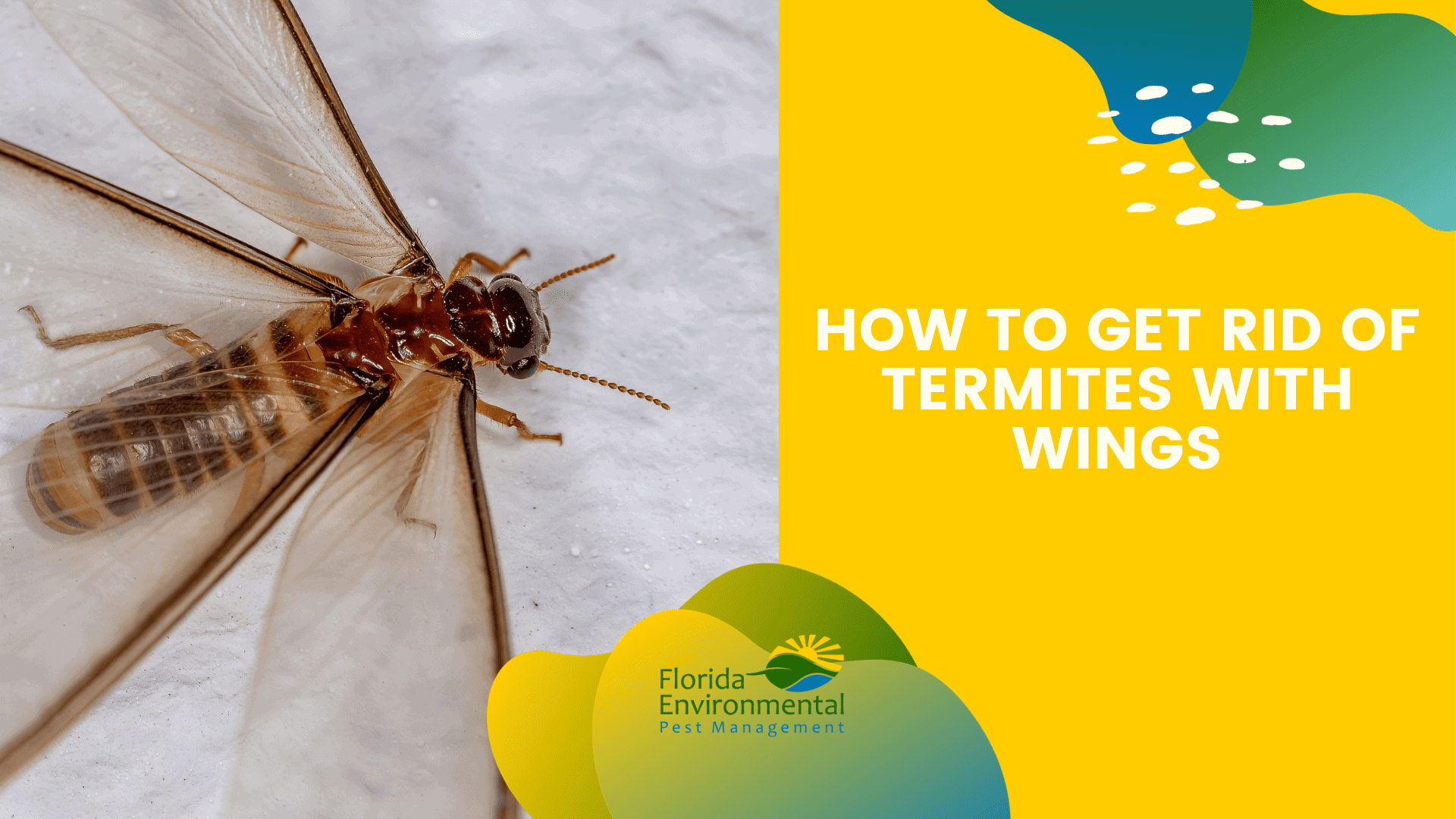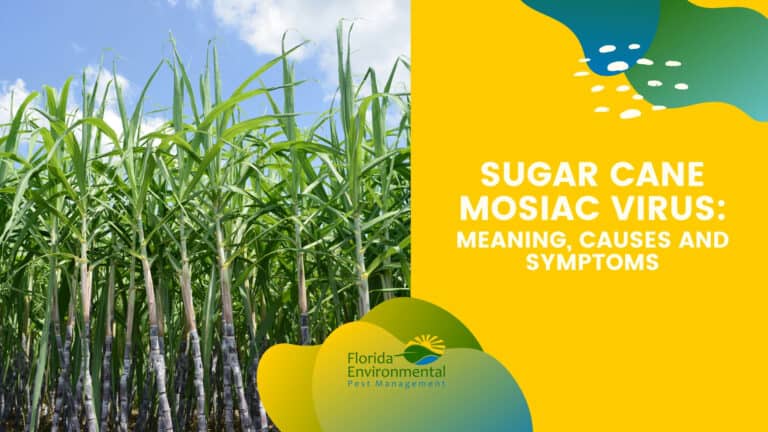When it comes to termites, those with wings can pose a significant threat to our homes and structures. These winged termites, also known as termite swarmers or alates, play an important role in the reproductive cycle of termite colonies.
Understanding what termites with wings are and their behavior helps you to come up with proactive measures to eliminate them. That way, you are sure to protect your home from potential damage.
So, if you’re facing an infestation or want to safeguard your property, this article is your guide to taking control and protecting what matters most.
What are flying termites?
As mentioned earlier, flying termites, also known as termite swarmers or alates, are reproductive termites that play a vital role in the expansion and survival of termite colonies. These winged termites leave their established colonies in large numbers during specific times of the year, forming swarms in search of a suitable location to establish new colonies.
One notable characteristic of flying termites is their wings. These wings allow them to travel relatively long distances, seeking out mates and new nesting sites. However, you must note that flying termites are often mistaken for flying ants due to their similar appearance. This misidentification can lead to ineffective treatment approaches, as termites and ants require different methods for control.
Correctly identifying flying termites is significant because it enables homeowners and pest control professionals to determine the appropriate treatment approach. Termite infestations can cause extensive damage to structures, so early detection and targeted treatment are crucial to minimize potential harm.
What color are termites with wings?
Termites with wings typically exhibit a pale or translucent coloration. Their bodies are often light in color, ranging from creamy white to light brown. Nonetheless, it’s important to note that the color of flying termites can vary depending on the termite species.
In addition to the color of their bodies, the wings of termites with wings may have distinct characteristics. While the bodies are generally light in color, the wings themselves may appear darker or have a smoky appearance. This darker coloration of the wings can help differentiate flying termites from other winged insects, such as flying ants.
It’s worth mentioning that the color of termites with wings should not be the sole factor used to identify them. Their body shape, antennae, and overall appearance should also be taken into consideration for accurate identification. If you suspect the presence of flying termites in your home or property, it is advisable to consult with a professional pest control service for proper identification and appropriate treatment measures.
What attracts termites with wings?
Flying termites are attracted to certain environmental conditions and factors that make properties more favorable for establishing new colonies. Understanding these attractants is crucial for implementing preventive measures and reducing the risk of termite infestations. Here are some factors that attract termites with wings:
1. Moisture
Termites are highly attracted to moisture-rich environments. Leaky pipes, faulty plumbing, damp basements, and areas with poor drainage create favorable conditions for termites. Moisture softens wood, making it easier for termites to feed and establish their colonies.
2. Wood and Cellulose Materials
Termites primarily feed on wood and other cellulose-based materials. They are drawn to structures made of wood, including wooden beams, furniture, flooring, and even paper products. Firewood, lumber, and debris near the house can also attract termites.
3. Soil-to-Wood Contact
Direct contact between soil and wood provides termites with easy access to their food source. Structures with wood touching the ground, such as wooden posts or untreated wooden foundations, are particularly vulnerable to termite infestations.
4. Mulch and Landscaping
Mulch, especially when placed near the foundation of a building, can create a moist and attractive environment for termites. Also, dense vegetation and landscaping that retains moisture near the house can serve as pathways for termites to access the structure.
How to get rid of termites with wings in the house
When it comes to effectively and thoroughly eliminating termites with wings from your house, professional termite control is highly recommended. Pest control professionals have the expertise, tools, and resources to properly identify the termite species and implement targeted treatment approaches.
Here are some common methods used by professionals:
1. Inspection and Identification
Professional termite control begins with a thorough inspection of the property to determine the extent of the infestation and identify the termite species present. This step is crucial in determining the most appropriate treatment approach.
2. Targeted Treatment Approaches
Professionals may use various treatment methods, depending on the specific situation. Liquid termiticides are commonly applied to the soil around the foundation or directly onto infested areas to create a barrier against termites. Bait systems, which involve strategically placing termite baits that are consumed and shared within the colony, can also be used to eliminate termites.
3. Addressing Underlying Cause
In addition to treating the infestation, professionals focus on addressing the underlying causes that attracts termites to your house. This may involve repairing moisture issues, improving drainage, and eliminating wood-to-soil contact points. By eliminating these attractants, the risk of future infestations can be significantly reduced.
4. Regular Monitoring and Maintenance
After treatment, professionals may recommend regular monitoring to ensure the effectiveness of the treatment and to detect any signs of termite activity. Ongoing maintenance, such as periodic inspections and preventive treatments, may be advised to provide long-term protection against termites.
5. Heat Treatment
Another method that can be employed by professionals is heat treatment. This involves raising the temperature in the infested area to a level that is lethal for termites. Heat treatment can penetrate into the walls and other hard-to-reach areas, effectively eliminating termites and their colonies.
Professional termite control is the most reliable way to address winged termite infestations. At Florida Environmental Pest Management, we have a team of pest control professionals that will ensure a comprehensive approach to eliminate termites with wings and safeguard your home against future infestations.
How big are termites with wings?
Termites with wings are generally smaller in size compared to worker termites. Their exact size can vary depending on the termite species.
In general, flying termites are typically around 1/4 to 3/8 of an inch (6 to 10 millimeters) in length. But you must understand that variations exist among different species of termites. Some species may have swarmers that are smaller or larger than the average size mentioned.
When comparing flying termites to other members of the termite colony, such as worker termites, the flying termites tend to be larger in size. Worker termites, responsible for tasks such as building tunnels and foraging for food, are usually smaller and have a length ranging from 1/8 to 1/4 of an inch (3 to 6 millimeters).
Also, size alone should not be relied upon as the sole factor for identifying termites with wings. Other characteristics such as body shape, coloration, and the presence of wings are also important in accurately identifying these flying termites.
Final Thoughts
If you intend to achieve effective winged termite control , then you must first learn how to identify and target them. These reproductive termites have pale or translucent bodies with darker wings. They are attracted to moisture, wood, and cellulose materials. Professional termite control is recommended for accurate identification and targeted treatment using liquid termiticides, bait systems, and addressing underlying causes. Early detection and intervention are vital to minimize damage.
Taking proactive measures like addressing moisture issues, reducing wood-to-soil contact, and regular inspections can prevent infestations. Stay vigilant, consult professionals for assistance, and act promptly to maintain a termite-free home.





